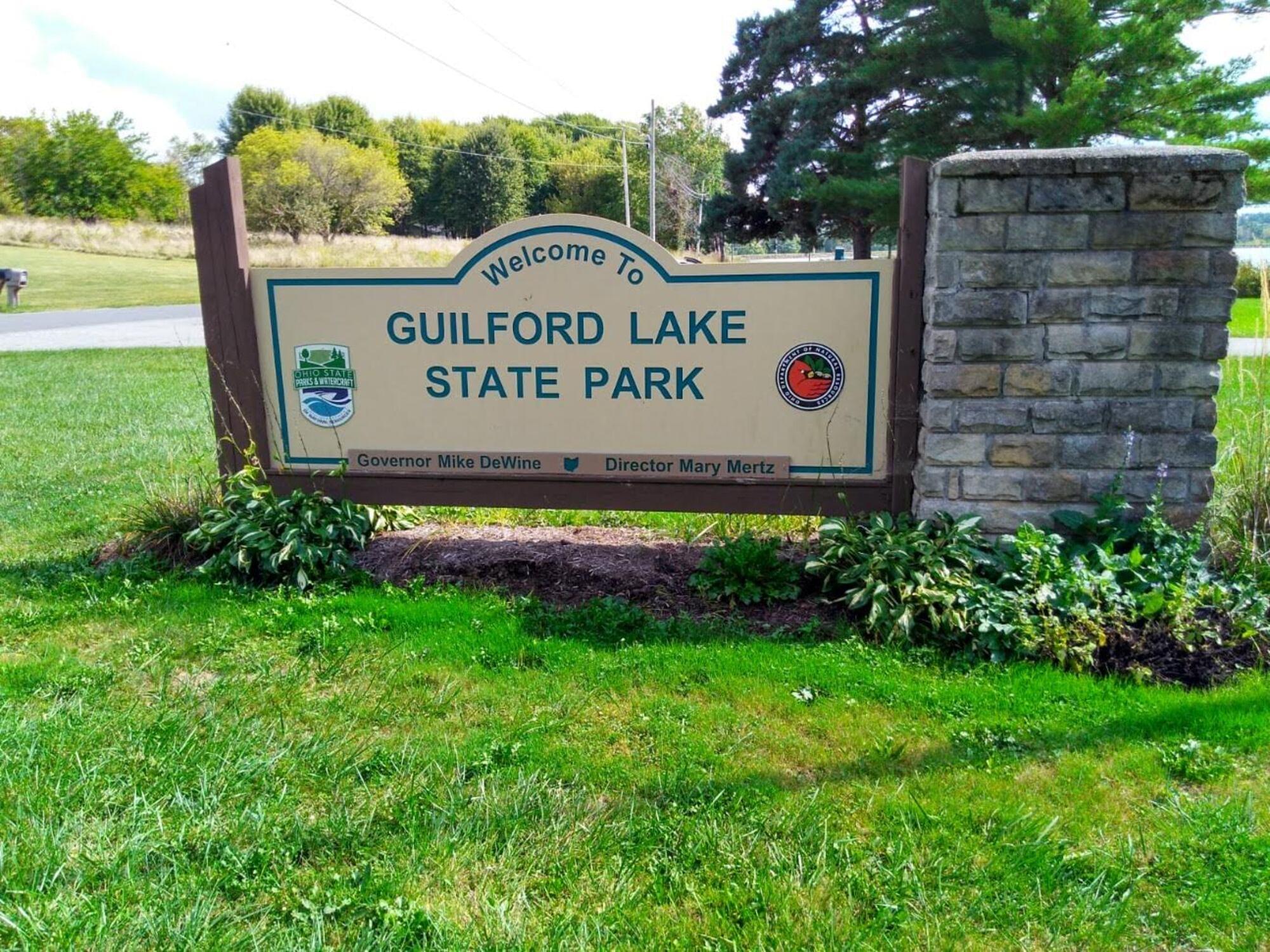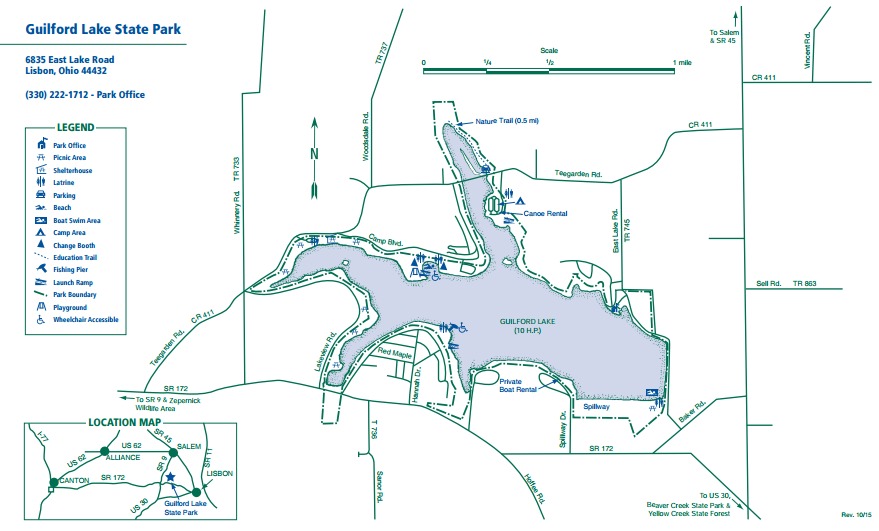Guilford Lake SP

Guilford Lake SP
6835 East Lake Road Lisbon, Ohio 44432
Guilford Lake State Park Official WebsiteGuilford Lake State Park map
Guilford Lake map
Also, see all the hotspots at:
Columbiana County Birding Drive
Tips for Birding
Most of the habitats are here, from large bodies of water to extensive marshland, to sycamore and hemlock-lined stream banks. During the present, Ohio Breeding Bird Atlas, in Block 53B5CW, a remarkable 123 species have been recorded. Guilford Lake has a beautiful State Park Campground and has summering Double-crested Cormorants and Ring-billed Gulls, along with nesting Bald Eagles, Great Horned Owls, and Eastern Screech-owl. The Ohio Department of Natural Resources Director, Sean Logan, lives here with his family. On a historical note is the fact that Guilford Reservoir, note the original spelling, was constructed about 1836 to provide water for the Sandy and Beaver Canal. Below and to the east of the causeway is the Depot Road Marsh. The Firestone Yeagley Wildlife Area Parking Lot is on Depot Road, providing viewing access from your vehicle. American Bittern, Least Bittern, Virginia Rail, Prothonotary Warbler, Marsh Wren, Swamp Sparrow, American Coot, Sora, and numerous Green Heron can be heard and seen here. Common Moorhen and Hooded Merganser families can easily be seen.
Also, see tips for birding Guilford Lake from Laura Dornan.
About this Location
It is most helpful when submitting eBird observations at Guilford Lake State Park to start a new checklist for each hotspot within the state park. Use this general hotspot when you have a checklist that includes multiple locations or there was not a hotspot or personal location appropriate for your sightings.
About Guilford Lake State Park
See all hotspots at Guilford Lake State Park
Guilford Lake is situated in the glaciated plateau region of Ohio. This portion of the Appalachian foothills was overridden by the glaciers that invaded Ohio more than 12,000 years ago. Eventually, the glacial advances were blocked by the harder and higher sandstone ridges of southeastern Ohio. The bedrock materials of this area were formed 300 million years ago from deposits laid down in streams and swamps.
Natural lakes are a feature of the glaciated landscape, although most in Ohio are very small and have now aged into bogs or marshes. These bodies of water were formed by huge chunks of ice that broke off from the retreating glacier and melted in depressions forming kettle lakes.
The area surrounding Guilford Lake, before being impounded as a reservoir, was extremely swampy indicating it may have been a remnant of a natural glacial lake. The park attracts migrating waterfowl in the fall and spring and also provides good habitat for a variety of songbirds such as the red-winged blackbird, song sparrow, and eastern meadowlark. Other wildlife common to the area are red fox, raccoon, skunk, and white-tailed deer.
Features
Restrooms on site
Wheelchair accessible trail
Entrance fee
Roadside viewing
Content from Guilford Lake State Park Official Website and Bob Lane
